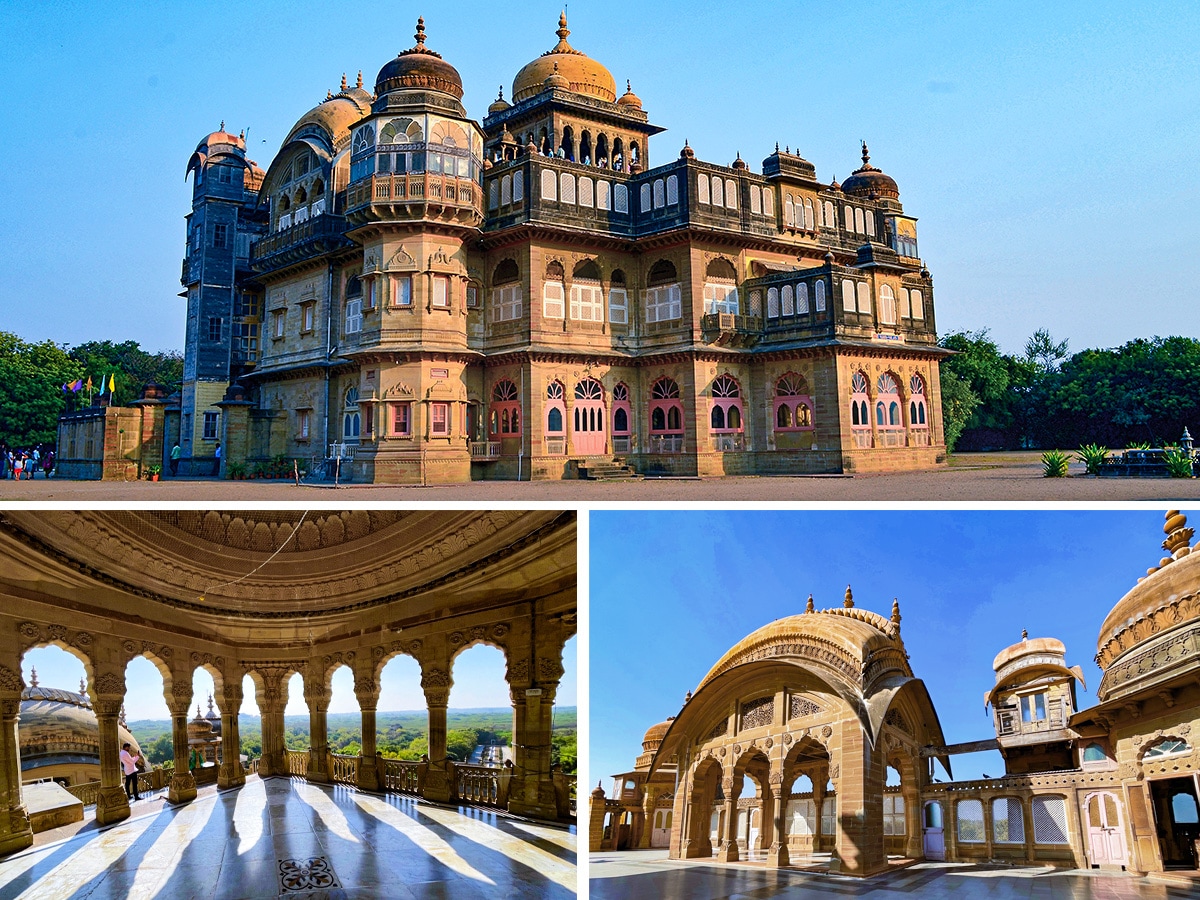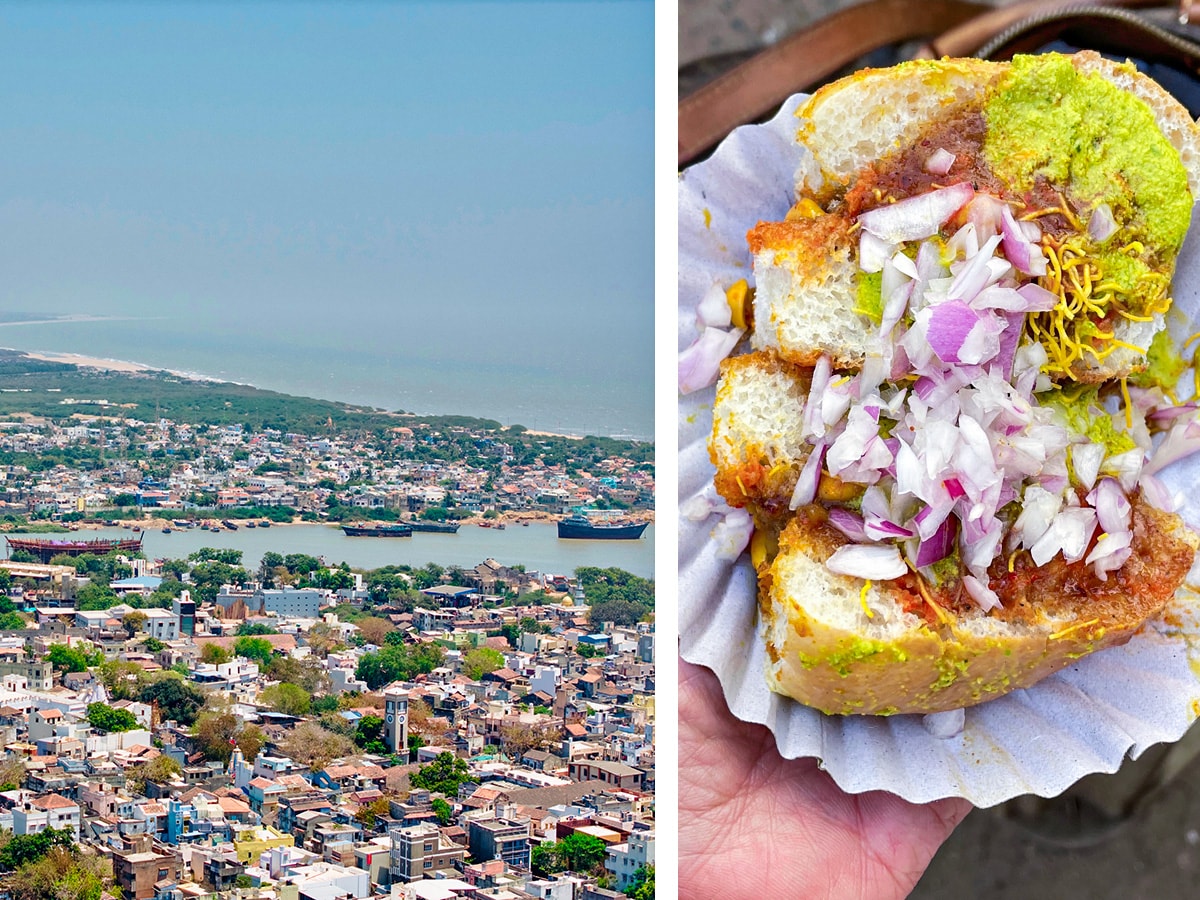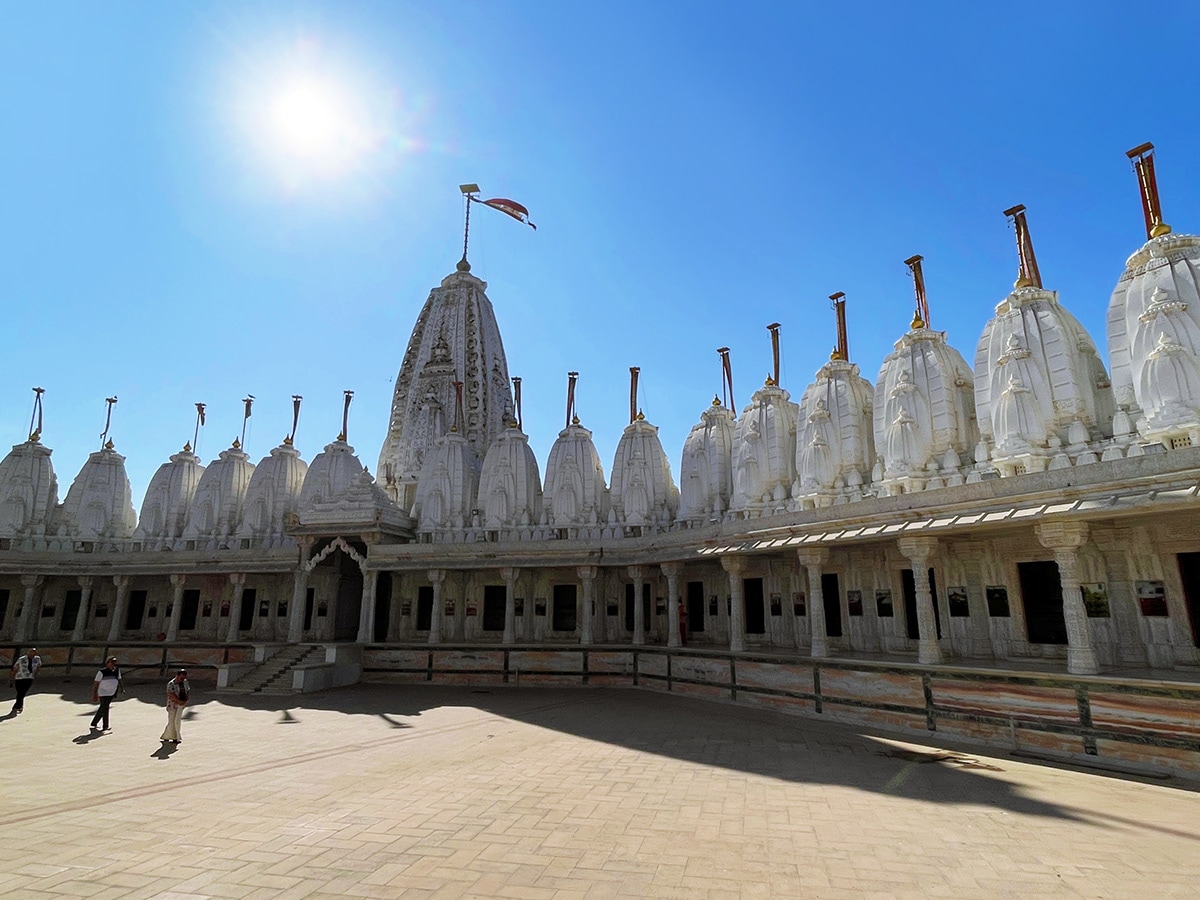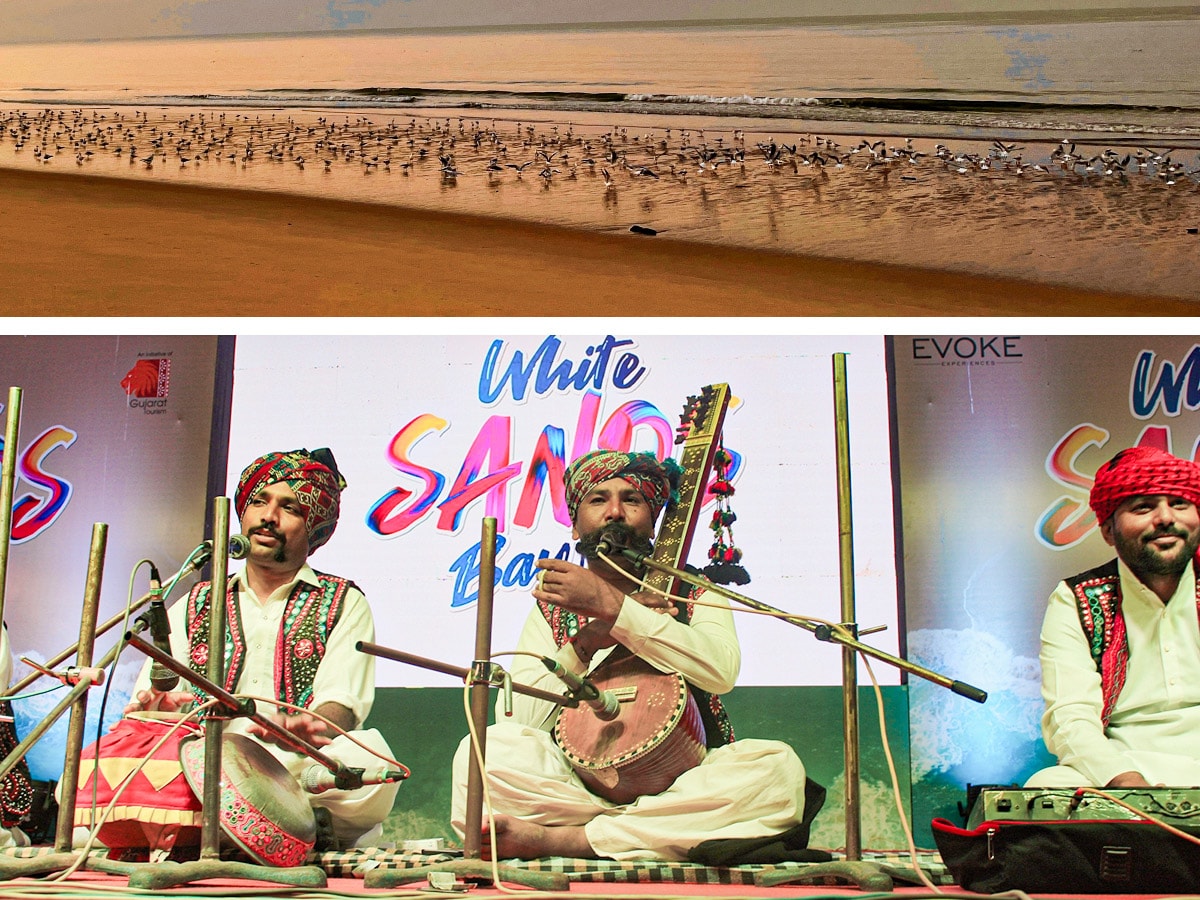
The age-old shipbuilding town of Mandvi is flexing its history
Tucked away in the Kachchh district of Gujarat, this coastal gem has pristine beaches, historic shipyards, and the majestic Vijaya Vilas Palace
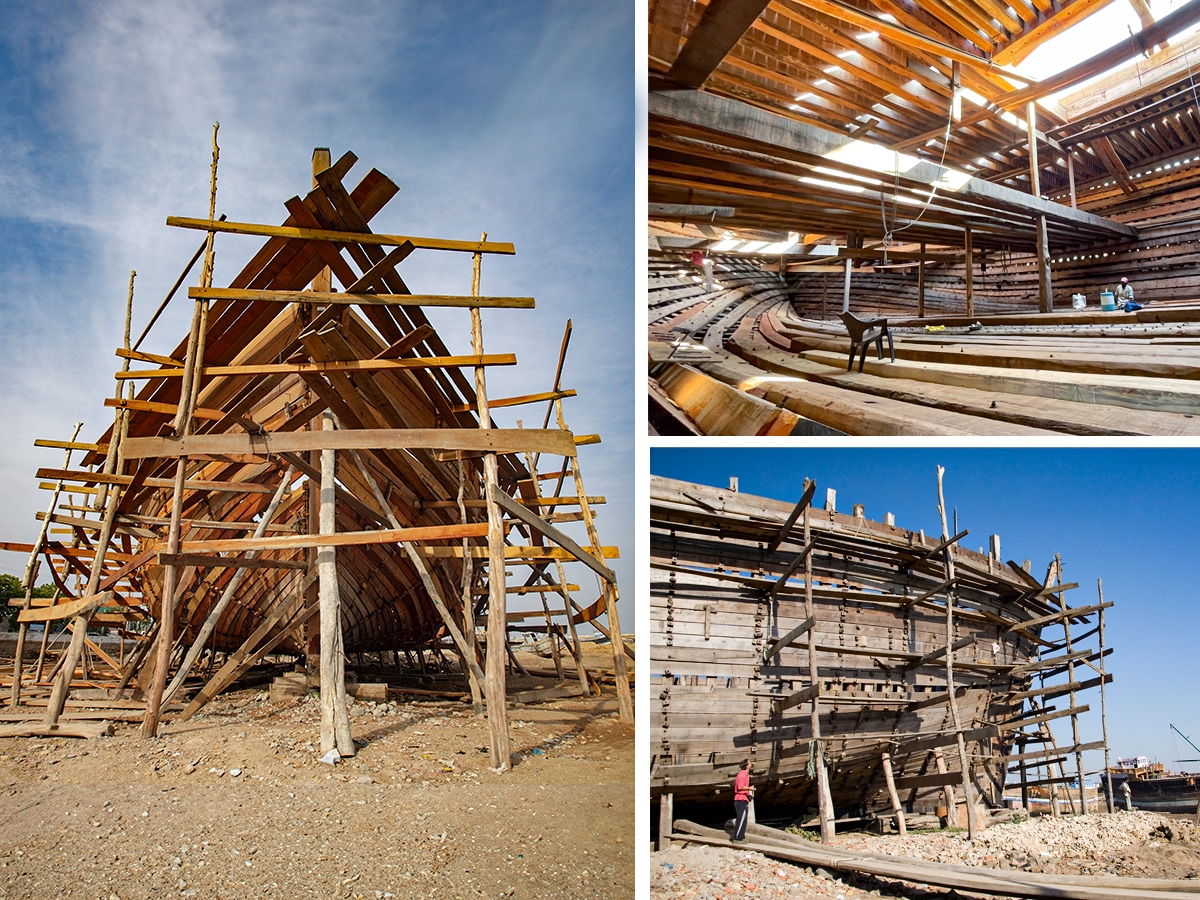 Mandvi preserves its heritage of wooden shipbuilding, with smaller vessels weighing around 2.5 tonnes and larger ones ranging from 1,500 to 3,500 tonnes.
Image: ( clockwise from above left ) Shutterstock, Veidehi Gite, Getty Images
Mandvi preserves its heritage of wooden shipbuilding, with smaller vessels weighing around 2.5 tonnes and larger ones ranging from 1,500 to 3,500 tonnes.
Image: ( clockwise from above left ) Shutterstock, Veidehi Gite, Getty Images
You know you are nearing Mandvi when the landscape suddenly shifts. Windmills spin in the coastal breeze and large ships line the shore, giving an ode to the town’s shipbuilding heritage. An irresistible aroma of a spiced dabeli welcomes you to this hidden gem that is tucked away in the Kachchh district of Gujarat.
Mandvi, a breezy, sun-kissed coastal town, once served as the summer retreat for the Maharao, the ruler of the erstwhile Cutch State. Its regal centrepiece, the Vijaya Vilas Palace, sprawls across 450 acres of land by the beach. Even today, part of the palace, which was built in the 1920s, remains home to royal descendants.



